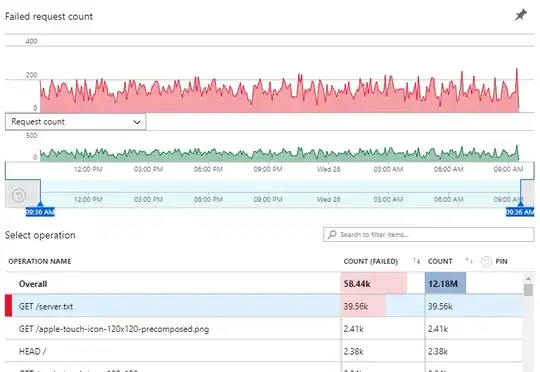One of my clients suddenly started seeing ~40k requests a day for "/server.txt" to their webserver that result in an HTTP 404. This is expected behavior as the file doesn't exist and isn't part of the website. However, it appears at the top of the Application Insights Failures tab - which bothers them:
My question is: What is the purpose of "server.txt"?
- Is it a file like "robots.txt" that we should include on the website?
- Is there any reason we shouldn't make a 0 byte file called server.txt to resolve the 404s?
It could be due to the name of the file being so generic, but I couldn't find any definitive information on the web about it. Hoping someone here can share some insight. Thank you.
